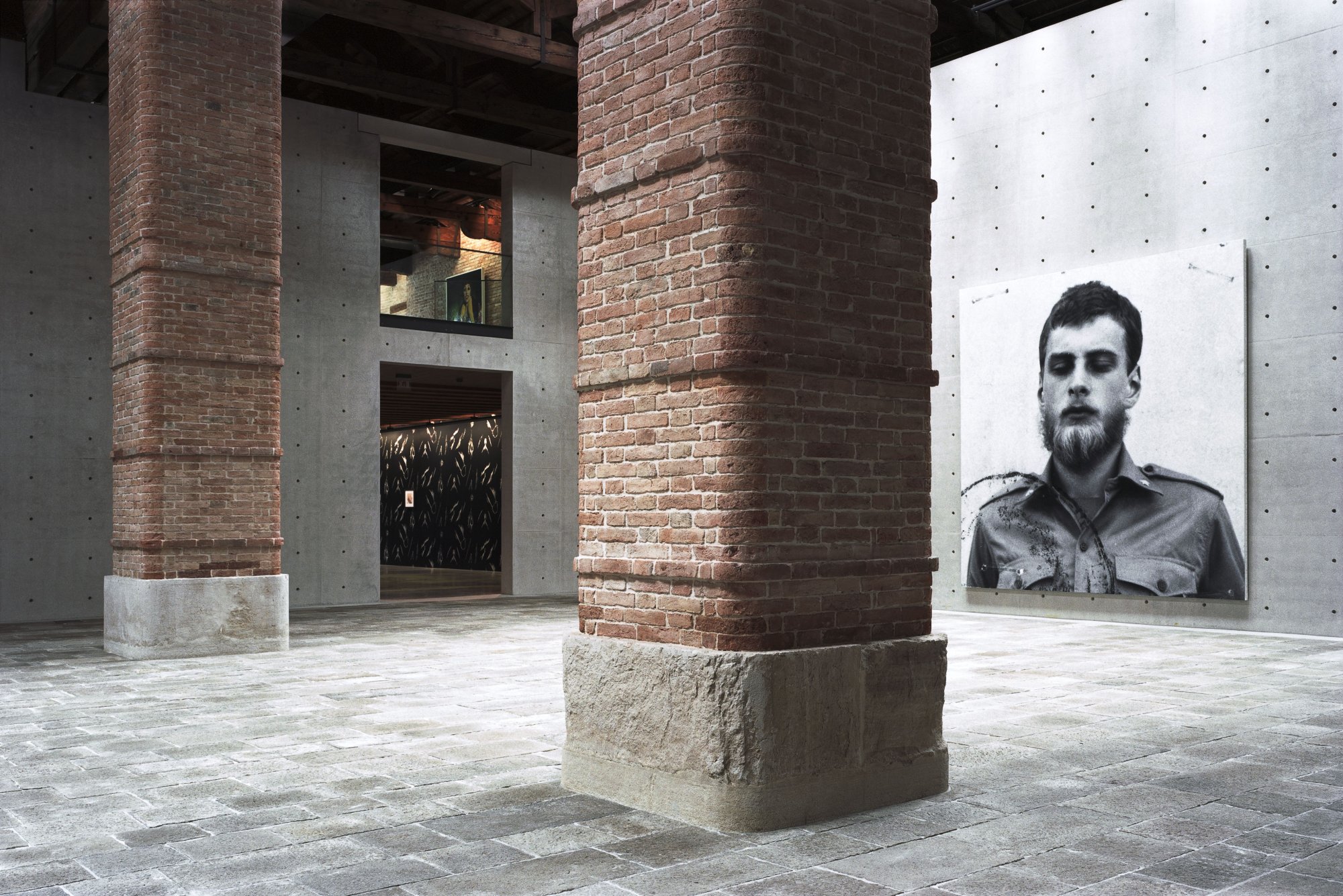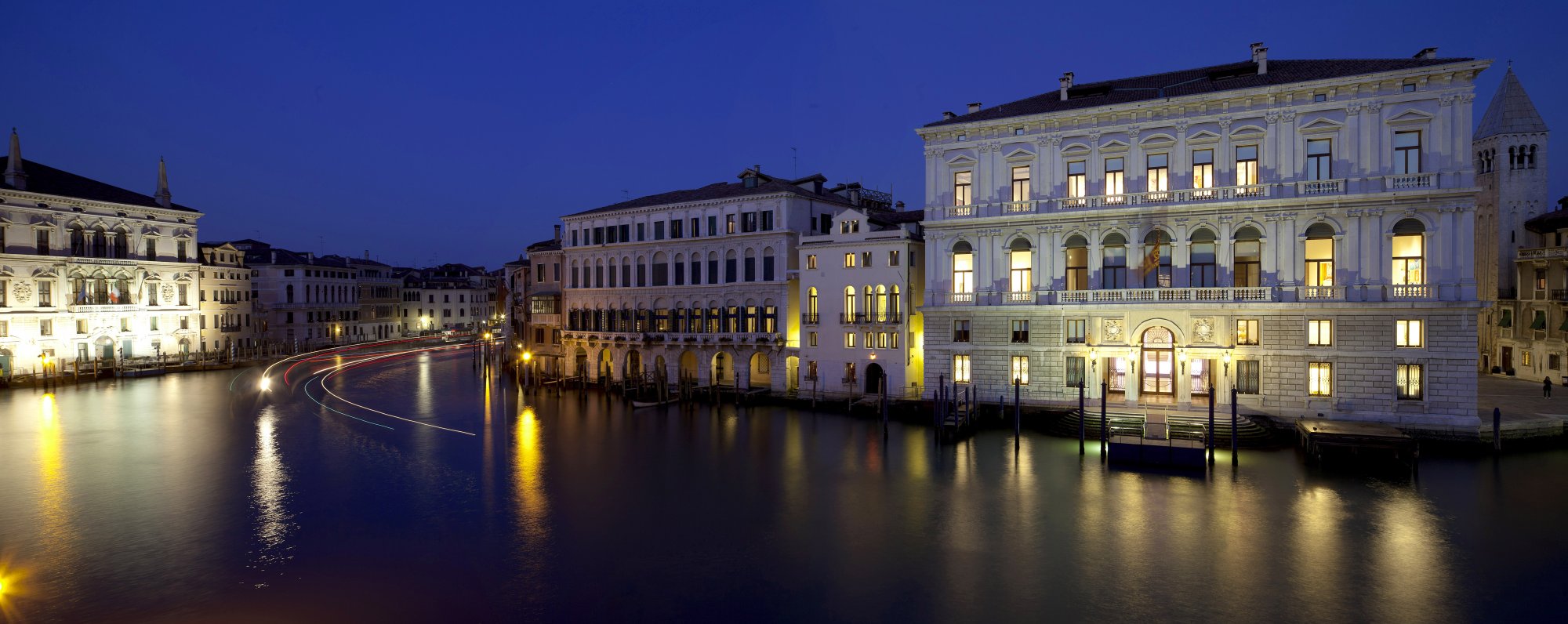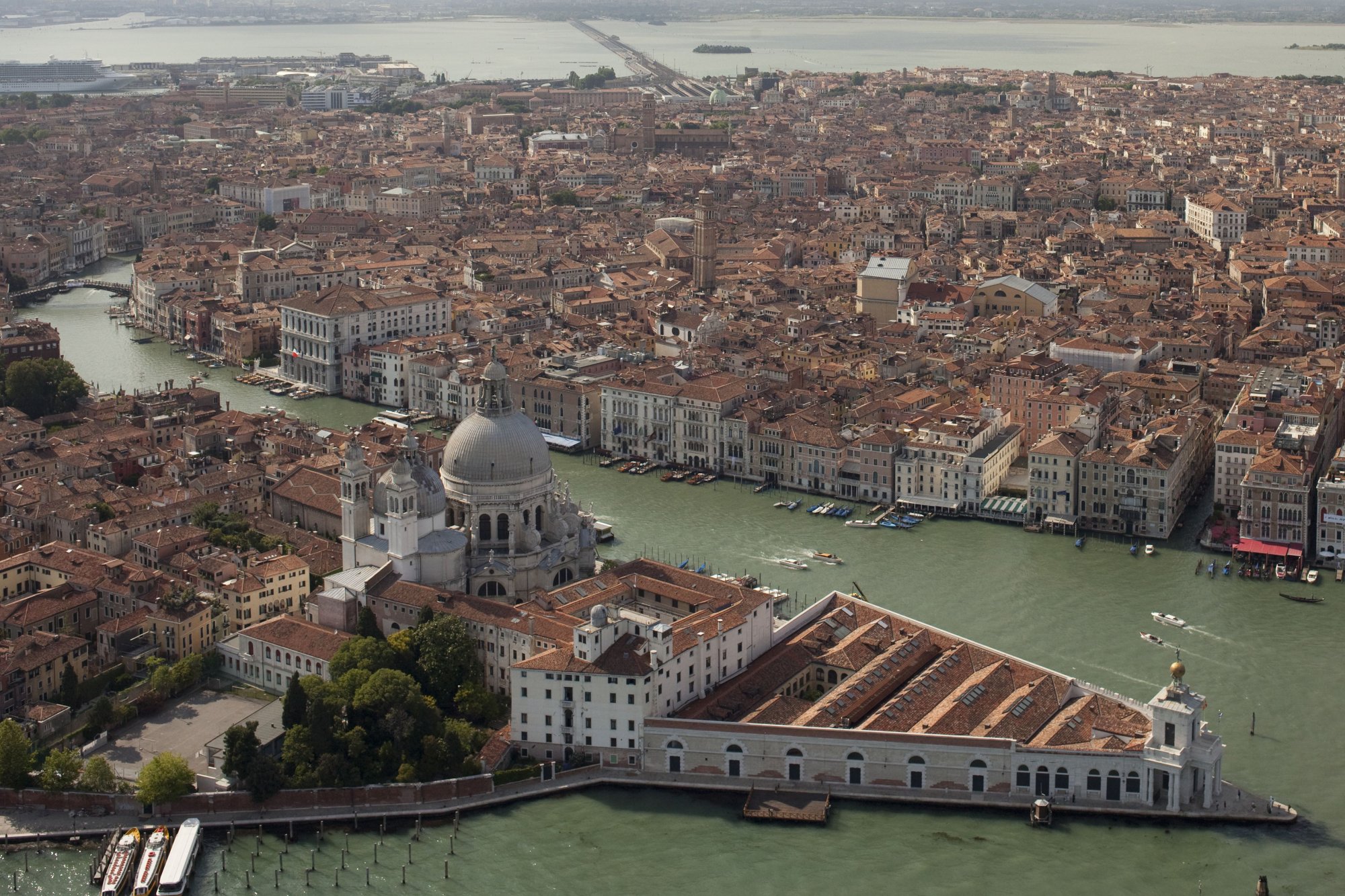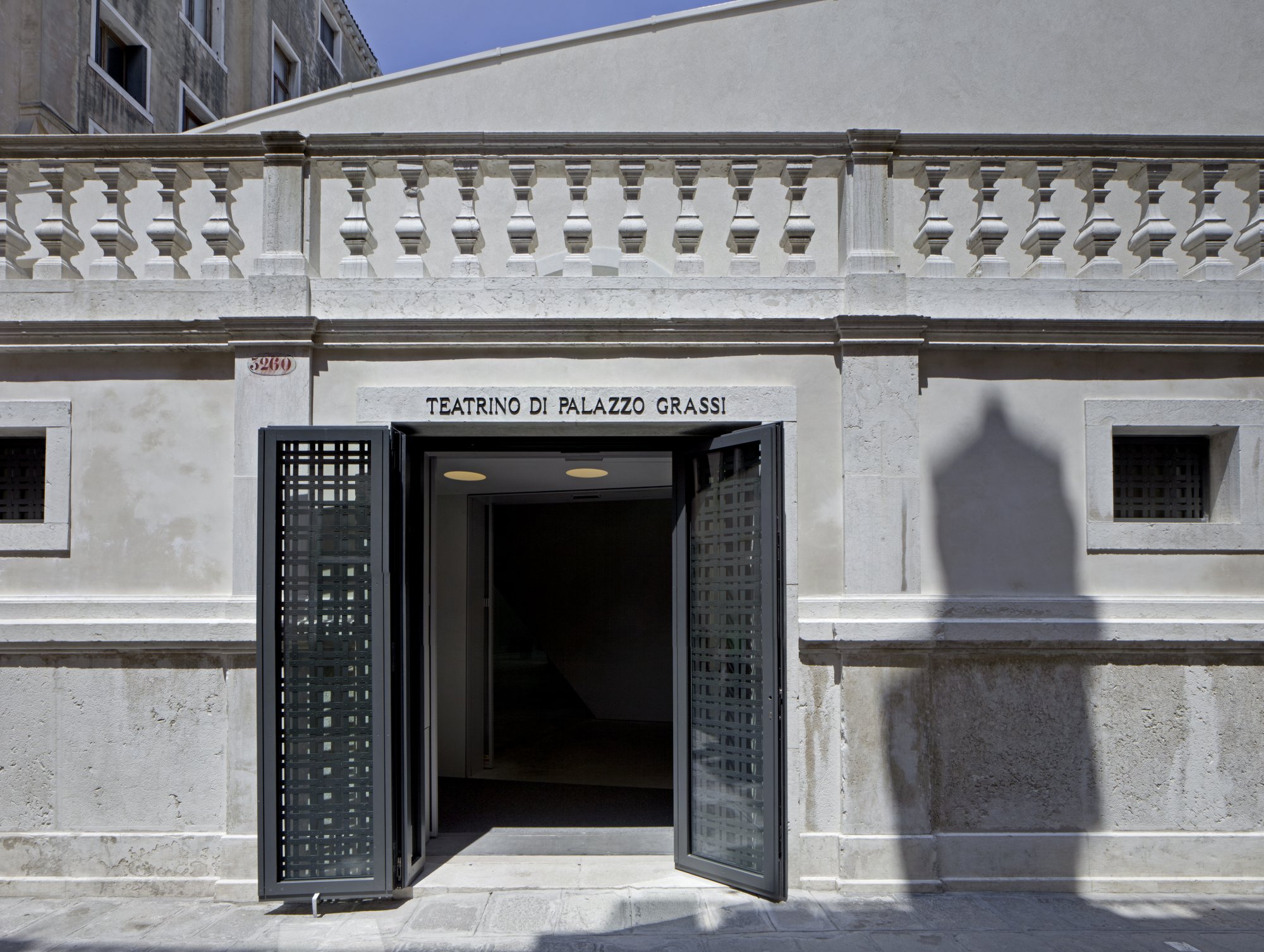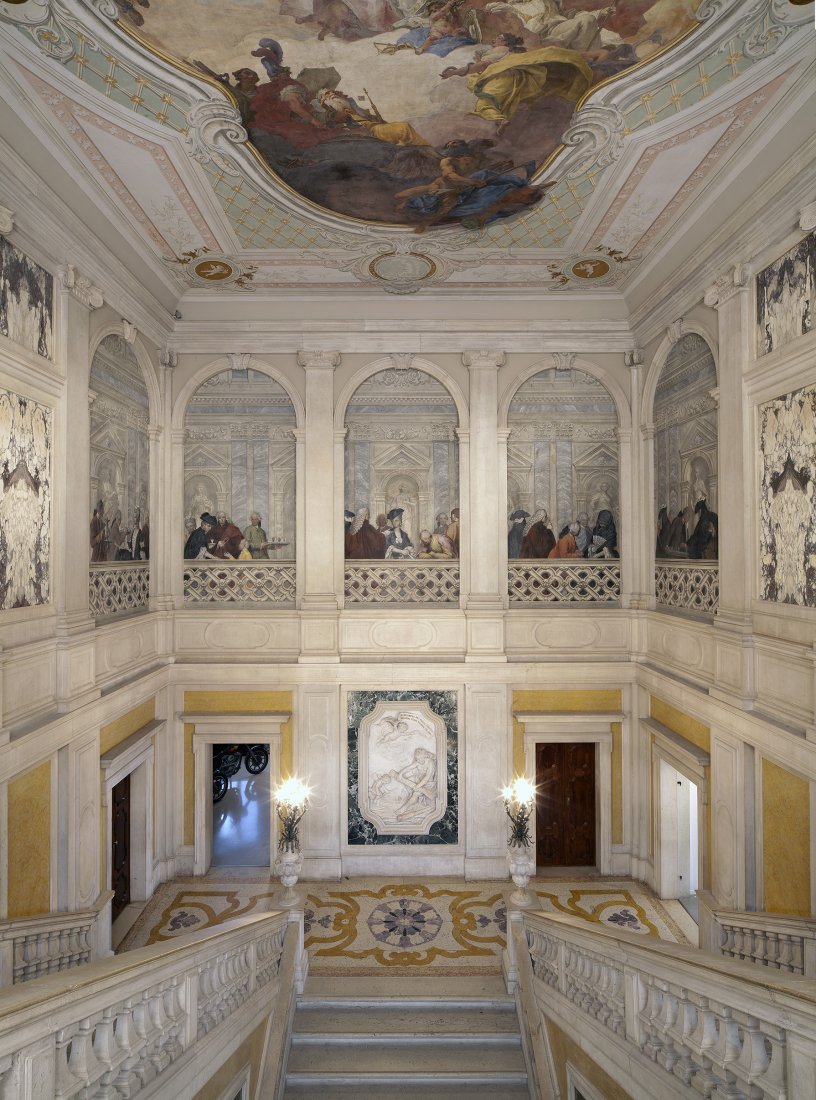
The Pinault Collection in Venice
In Venice, François Pinault’s contemporary art collection has established an ongoing dialogue with both the city’s extraordinary cultural heritage and the international art circuit through a constant succession of temporary exhibitions.
Opening their doors in 2006 and 2009 respectively, Palazzo Grassi and Punta della Dogana are the two contemporary art museums of the Pinault Collection in Venice. By offering a continuous series of temporary exhibitions, both solo and collective, François Pinault - one of the most notable art collectors in the world - hopes to share his extraordinary collection with as many people as possible: no mean feat given that it now includes approximately ten thousand works collected over more than fifty years.
His desire to present his personal point of view on contemporary art to the public and bring his collection to life has been exquisitely embodied in three of Venice’s most iconic venues: first at Palazzo Grassi, then at Punta della Dogana and, since 2013, through the dynamic schedule of cultural events on offer at the Teatrino di Palazzo Grassi. In 2021, the Pinault Collection’s network expanded even further, entering France with the opening of an exhibition venue at the Bourse de Commerce in Paris.
"My sincere wish is that the contemporary art center, consisting of Palazzo Grassi and Punta della Dogana, shall remain truly contemporary. This impetus is a matter of great importance for me but also for Venice, a city, which has always inspired the best of creativity."
François Pinault
The city of Venice has always been a highly-favoured point of reference for the geography of contemporary art and, thanks to its unmistakable cultural vocation, it proved to be the ideal place for the Pinault Collection to first share its rich and multifaceted overview of the current artistic landscape.
Through an extensive programme of exhibitions paired with a remarkable schedule of cultural activities and unique events, Palazzo Grassi, Punta della Dogana and the Teatrino di Palazzo Grassi have been transformed into the beating hearts of contemporary art which, rather than abandoning the legacy of the past and the valuable history within their walls, establish a harmonious dialogue between the novel and the traditional. Palazzo Grassi and Punta della Dogana form integral parts of the fabric of Venice, offering the public the opportunity to familiarise themselves with the lives and oeuvres of some of the greatest artists currently working: Daniel Buren, Maurizio Cattelan, Marlene Dumas Damien Hirst, Roni Horn, Yayoi Kusama, Sherrie Levine, Bruce Nauman, Irving Penn, Charles Ray, Cindy Sherman, Tatiana Trouvé and many more besides.
François Pinault always shows a keen interest in the artists and is directly involved with them, yet also has a passion for constantly exploring the new territories of contemporary artistic production. He actively enters into dialogue with some of the leading artists and curators on the international scene today, giving rise to such practices as the carte blanche formula, established in 2012 to encourage the creation of site-specific works by major figures from the art world who are invited to showcase their talents at the Pinault Collection’s venues.
Over the years, Palazzo Grassi and Punta della Dogana have made a name for themselves by offering more thirty temporary exhibitions, all of an original, innovative and truly spectacular nature. The range of exhibitions spans a variety of types of artistic production, including painting, installation, sculpture, video art, photography and performance, giving the artists multiple opportunities to express themselves autonomously in often unprecedented ways.
Palazzo Grassi
The palace on the Grand Canal, home to the first of the Pinault Collection’s exhibition venues, was originally a noble residence that was commissioned in the mid-1700s by the Grassi family from Venetian architect Giorgio Massari.
Its innate sense of 18th-century majesty remains as present as ever in the column-lined atrium - the first space to greet incoming visitors - and the grand staircase adorned with frescoes by Michelangelo Morlaiter and Francesco Zanchi, as well as the highly decorative ceiling featuring a fresco by Giambattista Canal. On the upper floors, home to the exhibition halls themselves, guests can still admire the spectacular 19th-century ceilings painted by Christian Griepenkerl at the behest of Baron Simeone De Sina, one of the various owners of the grand residence over the centuries. In the mid-1900s, the palace’s intended use changed radically, as it became the exhibition venue for the Centro Internazionale delle Arti e del Costume at the request of the Marinotti family. Later, in 1983, Fiat purchased Palazzo Grassi for use in the presentation of major art and archaeology exhibitions, though not before undertaking a restoration campaign headed up by architects Gae Aulenti and Antonio Foscari.
Upon its acquisition by François Pinault, Palazzo Grassi underwent a further restoration project between 2005 and 2006, led by Tadao Ando who, whilst respecting the limitations imposed by the existing architecture, rearranged the spaces once again.
Following this, 2006 marked the palace opening its doors as the first location for the Pinault Collection to be presented and shared with the public, boasting a steady stream of temporary exhibitions that has, over time, developed a particular focus on presenting the work of the various artists in the collection in monographic shows. Indeed, over the years Venice has played host to the debut solo exhibitions in Italy of such renowned artists as Marlene Dumas, Albert Oehlen, Martial Raysse, Rudolf Stingel and Luc Tuymans, but also important photographic exhibitions featuring the work of Henri Cartier-Bresson and Irving Penn, to name but a few.
Punta della Dogana
The current configuration of the warehouses of the Dogana da Mar - originally a maritime customs complex designed by architect Giuseppe Benoni - was completed in 1682 and, as a gateway to the city for sea travel, they are located near Baldassarre Longhena’s Basilica della Salute. After being decommissioned in the 1980s, Punta della Dogana fell into a state of disrepair until the City of Venice launched a competition for it to be transformed into a contemporary art centre. The Pinault Collection was awarded the contract in 2007, and François Pinault decided to once again entrust the project to Tadao Ando, who oversaw an extraordinary reclamation of the previously-defunct spaces.
With a campaign of works lasting a little over a year, guided by historical memory and technological innovation in equal measure, the architect proved capable of transforming the site into a space with a spectacular yet understated character.
At its heart, in a double-height room, Tadao Ando has placed the iconic reinforced concrete Cube, following the same principle that he would go on to reuse a decade later in the Rotunda at the Bourse de Commerce in Paris.
Since 2009, Punta della Dogana has been a place where visitors can enjoy a combined experience of contemporary art, historical architecture and the city of Venice, which can be admired through the vast windows. Thanks to its sizeable spaces - extensive enough to house to even the most monumental of works exploring the themes represented in the Pinault Collection - it plays host to an exceptional programme of exhibitions boasting shows, particularly collective ones, that are nothing short of exceptional. Some of the most innovative of these, such as Mapping the Studio: Artists from the François Pinault Collection (2009 to 2011), In Praise of Doubt (2011 to 2013), Accrochage (2016) and Luogo e segni (2019), brought together pieces by artists such as Nan Goldin, David Hammons, Sol LeWitt, Takashi Murakami and Philippe Parreno under one roof at Punta della Dogana.
Teatrino di Palazzo Grassi
In 2011, François Pinault decided to set about transforming the area adjacent to Palazzo Grassi, which had been falling ever further into disrepair for years. As such, he once again opted to commission Tadao Ando to readapt the space, which was originally home to a romantic garden with greenhouses, fountains, scenic elements, columns and pergolas created for Baron Simeone De Sina, later replaced in the 1950s with an outdoor theatre, and subsequently covered in the 1970s to host celebrations, fashion shows and theatre performances.
The third element in the Pinault Collection’s cultural network in Venice, the Teatrino di Palazzo Grassi, was restored without modifications to the perimeter occupied by the existing building, preserving its height and external appearance as they have been through the years. A dramatic difference, however, is immediately obvious inside, with a foyer and an auditorium characterised by elegant, gently sloping matte grey walls and large, triangular openings.
When the Teatrino opened its doors in 2013, the rich variety of its cultural offering helped to bolster its role as a place of exchange, dialogue and openness towards Venice, establishing itself as one of the most dynamic protagonists in the context of the city. Through series of events with artists, scholars and writers, screenings, workshops and masterclasses open to children and adults alike, as well as lectures revolving around art, architecture, literature and cinema, it has taken its place as a space for cultural exchange and sharing.
The Teatrino di Palazzo Grassi has also provided a platform for a great many discussions surrounding the themes addressed by the exhibitions of the Pinault Collection, delving deeper into the issues and topics explored by the works and artists on display, for example with multiple series of screenings created by the artists themselves relating to the influences and inspiration behind their exhibitions.
The workshops, along with the discussions and various events held in the Teatrino’s spaces, have now become regular fixtures in the diaries of both art enthusiasts and anyone wishing to approach art in ever more original, innovative ways.
